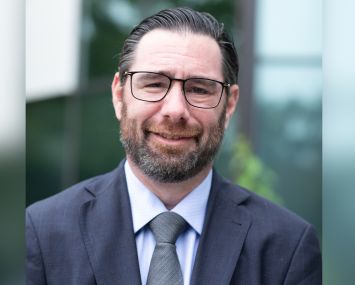 In January, the 13-year-old real estate firm Hunter Realty Organization joined forces with Coldwell Banker Commercial. As principals of the new group, and founders of Hunter Realty, Richard Selig, 56, and Peter Sabesan, 50, will now operate within a global platform while also veering into the distressed-assets market. Mr. Selig sat down to talk about joining the Coldwell Banker network, expansion plans and delving into the lucrative world of distressed-asset management.
In January, the 13-year-old real estate firm Hunter Realty Organization joined forces with Coldwell Banker Commercial. As principals of the new group, and founders of Hunter Realty, Richard Selig, 56, and Peter Sabesan, 50, will now operate within a global platform while also veering into the distressed-assets market. Mr. Selig sat down to talk about joining the Coldwell Banker network, expansion plans and delving into the lucrative world of distressed-asset management.
The Commercial Observer: Congratulations on the merger. Give me a summary of your first 11 months at the new entity.
Mr. Selig: We’ve expanded what we do. During the Hunter Realty days, we specifically focused on commercial tenant representation and some landlord agency work. Now, when we joined Coldwell Banker Commercial, we now have a partner that does asset management of 13 million square feet in 17 states called Phoenix Asset Management. We’ve also expanded the horizons of doing REO work. We’re getting into other facets of the real estate industry by joining Coldwell Banker.
Describe the negotiations between Hunter Realty and Coldwell Banker. How long did they last and what, specifically, did they see of value in your organization?
My partner and I have over 30 years of experience each in commercial real estate, with what I’d like to think of as a pretty good reputation. We’ve been one of the leading tenant-rep firms in the market, and so when they called us–which was probably nine months prior to us officially joining them–they had done their homework and contacted a couple of other firms with good reputations in the market. And we had been looking for a global platform for about five-plus years, but nothing seemed to work perfectly at the time.
During the negotiations, what sticking points did Hunter Realty have?
Well, yes, there are always sticking points. It’s a contract negotiation, so it was about the terms and the terms of the contract and percentages paid to the franchisor by the franchisee and just language. We have to make sure our attorneys make money.
What is the biggest benefit of joining Coldwell Banker Commercial?
The global platform. Coldwell Banker Commercial Corporate is owned by Realogy, who also owns Coldwell Banker Residential, ERA, Encore and other brands in 9,400 offices throughout the United States and overseas. So it’s a global platform, which we’re profiting from a great deal.
Tell me about the REO, or real estate owned, work you’re now doing?
Yeah, what we’ve been doing is we’ve been going into other parts of the real estate business and we now are doing REO work, which are distressed assets. We have an office in Chicago that’s doing that with our asset management people. We assist banks in running their real estate and the management of the real estate as an asset manager for their distressed assets.
We’re looking at everything from residential to commercial to industrial–all different types of REO work. We’ve started all this since joining Coldwell Banker Commercial, so it’s all very new for us here.
How did you and your partner, Peter Sabesan, celebrate the merger?
We went to work the next day. There was no celebration. Like I say, we’ve been doing this a very long time. So you really never celebrate. It’s more like ‘This is off the table, so now let’s move to the next issue or deal or problem.’ The celebrations happened when we were younger in the industry. The commission isn’t earned until the check has cleared.
Both you and Peter have connections to Helmsley-Spear and Helmsley-Noyes. Did Harry Helmsley impart any career lessons during your time with him?
It was a great education. Helmsley-Spear was like going to school as a leasing agent and as a senior person in the leasing division. And when you ran buildings for Mr. Helmsley and Mrs. Helmsley, you basically ran the management of the building also.
Part of the education in those days was learning about building management at the same time as being a leasing agent, so we learned about electric and we learned about air-conditioning systems and how to run a building. So that was probably the best education you could have in the industry, and you don’t see that anymore.
Describe your signature deal or who your typical client might be.
Being a midlevel brokerage firm, on the brokerage side, our clientele was basically 50,000 square feet and below. One of my brokers just did approximately 40,000 square feet with a temporary office company called WeWork, and this is on Little West 12th Street. They basically rented them a whole building.
But it’s hard to say what specific type of industry we go toward because we basically run the gamut. But Peter and I have grown up on the Wall Street businesses and have done many deals with the securities industry and financial institutions.
How many people did you bring over from Hunter Realty?
We brought over our whole staff, which is probably around 17 brokers. And now we’re up to about 24 brokers. We’ve added seven extra, and also we now have a complete asset-management division headed by Barry Pincus and Brad Pincus, and they’re located out in Garden City. They have another 7 to 10 people.
So it sounds like you might be close to outgrowing your space here at 1430 Broadway.
We’ve just taken an additional 1,500 square feet, which is what we’re sitting in right now. So we’re probably at about 7,500 square feet, and we will naturally grow as other leases come up on the floor.
Did you do that real estate deal yourself?
Yeah, we did, but I’m not sure if we did a good job or not. Because once you’re a tenant in the building, you don’t have a lot of wiggle room. But we have a very good relationship with the owners of the building, so it’s all worked out for the best.
jsedertrom@observer.com


